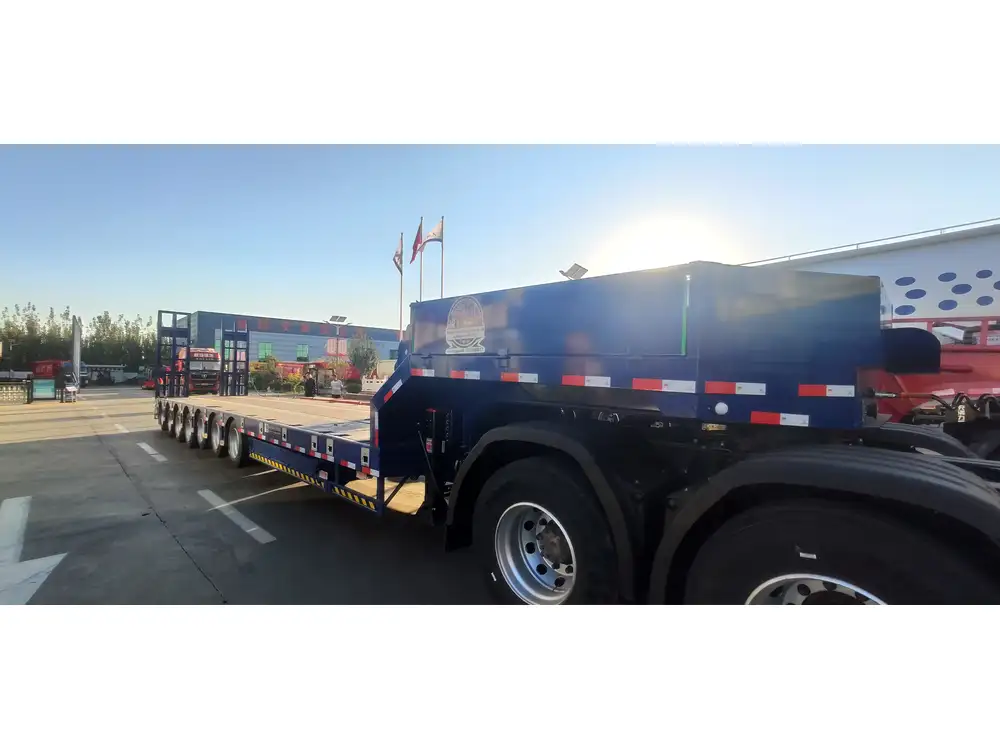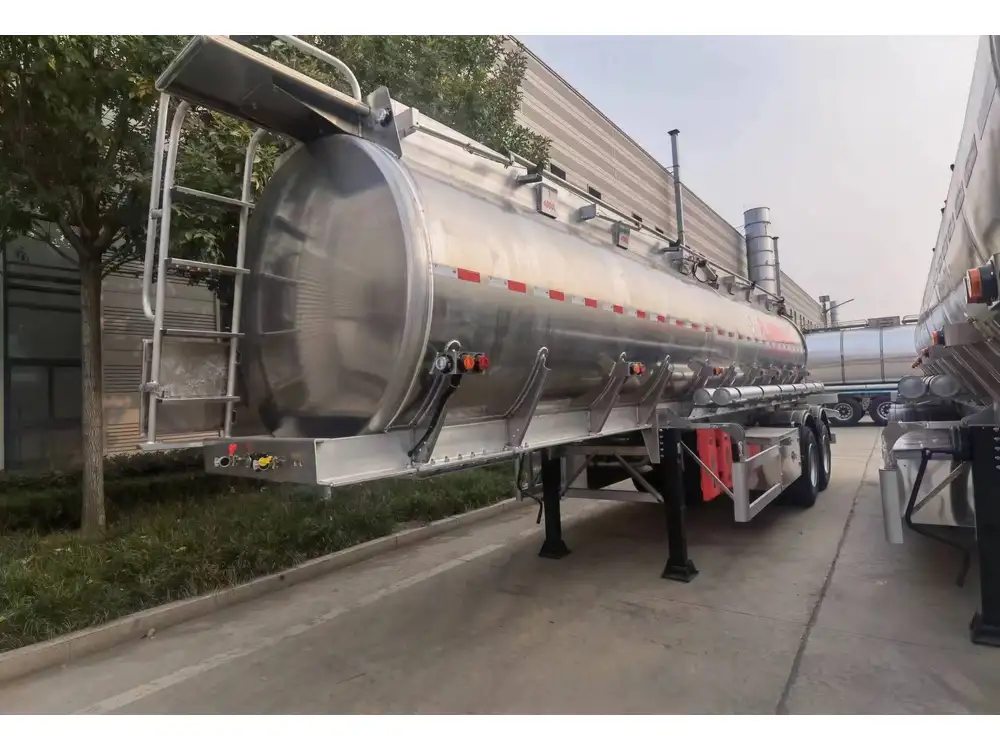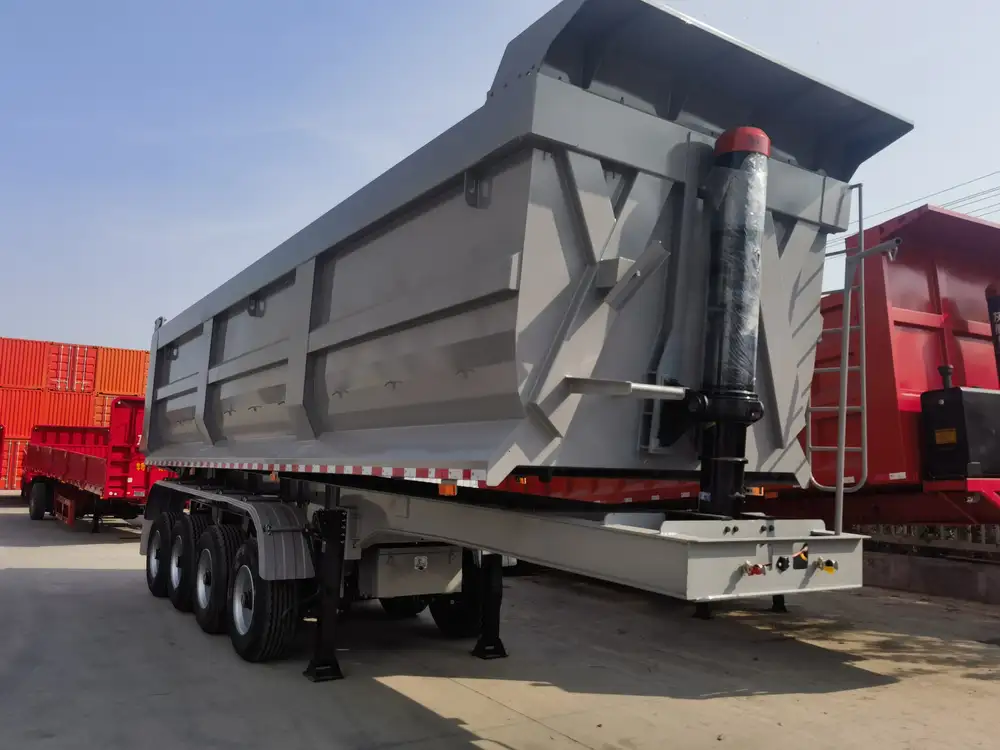Introduction to Weigh Stations
Every truck driver knows the significance of weigh stations, particularly in the context of semi-trailer trucks. These crucial checkpoints exist primarily to ensure that commercial vehicles adhere to weight regulations, maintaining safety on our roads. The implications of exceeding weight limits can be profound, involving hefty fines, safety concerns, and operational inefficiencies. In this article, we will delve into various aspects associated with weigh stations, focusing on how they impact the efficiency and compliance of semi-trailer operations.
The Purpose of Weigh Stations

Why Do Semi-Trailer Trucks Stop at Weigh Stations?
The primary functions of weigh stations include:
- Weight Compliance: Ensuring that trucks do not exceed federal and state weight limits. Heavy trucks can damage road infrastructures and increase accident risks.
- Safety Checks: Conducting brief inspections to guarantee that vehicles are roadworthy.
- Regulatory Adherence: Helping enforce local, state, and federal transportation regulations, thereby maintaining order in the transportation industry.
- Data Collection: Gathering statistical information pertinent to trucking populations, which helps in planning and policy-making.
Typical Protocols at Weigh Stations
When a semi-trailer truck approaches a weigh station, several protocols are typically adhered to:
- Entry Inspection: Drivers are often required to stop and provide pertinent documentation.
- Weighing: The truck is weighed using scales embedded in the road. This can either be a static weight or performed via weigh-in-motion (WIM) sensors.
- Documentation Review: Authorities may check the driver’s permit, registration, and other relevant paperwork.
- Secondary Inspection (if necessary): If weight limits are exceeded or paperwork is incomplete, a secondary inspection may be conducted.
Legal Weight Limits for Semi-Trailer Trucks

Understanding Load Capacities
Knowing the maximum allowable weight limits is vital for any trucking operation. Here’s a brief overview:
| Vehicle Type | Gross Vehicle Weight Limit (GVWR) | Net Payload Capacity |
|---|---|---|
| Single Axle Truck | 20,000 lbs | 12,500 lbs |
| Tandem Axle Truck | 34,000 lbs | 28,500 lbs |
| Semi-Trailer Combination | 80,000 lbs | Varies with trailer |
These limits are critical in maintaining safety on the roads and avoiding penalties.
Consequences of Overweight Violations
Operating a semi-trailer that exceeds the weight limit can have serious implications:
- Fines: Regulatory agencies impose substantial fines for violations, which can range from hundreds to thousands of dollars.
- Legal Action: Repeat offenders may face increased legal scrutiny and potential suspensions of their commercial driver’s license (CDL).
- Detained Cargo: Trucks found to be overweight can have their cargo confiscated until a legal resolution is reached.
- Accidents and Liability: Overweight trucks are far more likely to be involved in accidents, which can lead to liability claims, increased insurance premiums, and potential legal repercussions for the truck operator.
Weight Distribution: The Fundamental Aspect of Load Safety

Proper Load Distribution Techniques
Proper load distribution is essential in preventing trailer sway and maintaining overall vehicle control. Drivers and logistics managers must consider:
- Center of Gravity: Maintain a low center of gravity by distributing heavier items at the bottom of the load.
- Weight Balance: Ensure that the weight is evenly distributed across the axles. An imbalance can lead to axle overloads and increased wear on tires.
- Cargo Securing: Use appropriate tarps, straps, and other securing methods to prevent cargo shifts during transit.
Advantages of Proper Load Distribution
| Benefit | Description |
|---|---|
| Enhanced Safety | Reduces risk of accidents caused by swaying or tipping. |
| Improved Fuel Efficiency | A balanced load enhances aerodynamics and optimizes fuel consumption. |
| Longer Equipment Longevity | Even weight distribution decreases wear on tires and other components. |
Preparing for a Weigh Station Stop

Pre-Trip Checklists
Before hitting the road, conducting a comprehensive vehicle inspection can save time and eliminate potential issues at weigh stations:
- Tire Pressure: Ensure proper inflation as it affects load distribution and fuel economy.
- Brakes: Confirm that braking systems are fully operational.
- Lights & Reflectors: Check that all lighting complies with regulations for visibility, especially at night.
- Cargo Security: Verify that all loads are secured against movement.
Ensuring Documentation is in Order
Prepare all necessary documents before reaching the weigh station to expedite the process:
- Commercial Driver’s License (CDL)
- Vehicle Registration
- Insurance Information
- Bill of Lading (BOL)
The Role of Technology in Weigh Stations

Weigh-in-Motion Systems (WIM)
The advent of weigh-in-motion (WIM) technology has revolutionized the traditional weigh station model. Key advantages include:
- Efficiency: WIM allows trucks to be weighed without coming to a complete stop, significantly reducing congestion at weigh stations.
- Data Collection: Real-time data collection aids in managing vehicle compliance and optimizing road maintenance.
- Operational Flexibility: Many states are implementing automated weigh stations, which can operate 24/7.
Navigation and Compliance Apps
Several advanced applications have emerged that assist drivers in preparing for weigh station stops:
- Route Planning: Tools such as Google Maps or dedicated trucking navigation systems that incorporate weigh station locations.
- Compliance Alerts: Apps that notify drivers of upcoming weights regulations and help manage legal limits effectively.
- Load Management Tools: Inventory tracking applications streamline the loading process by predicting loads and calculating optimal weight distributions.
Addressing Common Weigh Station Concerns

Drivers’ Frequently Asked Questions
What should I do if I exceed the weight limit?
- Offload cargo if possible, redistribute weight among axles, or move some freight to another vehicle.
Are weigh station stops mandatory?
- Yes, all commercial vehicles must stop at weigh stations unless directed otherwise by signage.
How are fines determined for overweight trucks?
- Fines vary by state and the degree of overweight. Moreover, the violation can impact your safety rating.
What happens if I’m directed to a secondary inspection?
- Be prepared for an in-depth check of the cargo and vehicle condition, as the authorities may evaluate compliance rigorously.
Weigh Stations: An Integral Part of Road Safety
Advocating for Compliance and Safety
Engaging with weigh stations is not just about avoiding fines; it’s about contributing to the safety and integrity of our transportation infrastructure. Compliant operators foster safer roadways, ensuring better conditions for all users.

Future Developments in Weigh Station Operations
As the trucking industry evolves, we anticipate further advancements in weigh station technology. Innovations may include:
- Enhanced Automation: More states may adopt WIM technology, allowing for smoother transitions through weigh stations.
- Data-Driven Compliance: Using collected data to safeguard compliance and optimize routes effectively.
- Greater Public Awareness: Increased educational efforts focusing on driver safety and weight regulations.
Conclusion: Embracing the Essentials of Weigh Station Compliance
Engaging with weigh stations is essential for the smooth operation of semi-trailer trucks on our highways. By understanding and adhering to weight regulations, utilizing technological advancements, and preparing thoroughly for weigh station visits, operators can not only enhance their own operational efficiency but also contribute positively to the broader transportation network. As we move into a future marked by technological innovations, the importance of maintaining compliance will remain critical in ensuring safety and operational excellence on the road.



